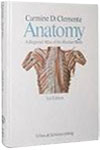Disquisitiones mathematicae, de controversiis et novitatibus astronomicis quas sub praesidio Christophori Scheiner, De Societate Iesv . publice disputandas posvit, propvgnavit . Ioannes Georgius Locher . Ingolstadt: Eder for Elisabeth Angermaria, 1614. [Bound after:] TANNER, Adam, praes. Astrologia Sacra: hoc est, Orationes et Quaestiones quinque, quibus explicatur, an et qua ratione fas sit homini christiano, de rebus occultis, praesertim futuris, ex astris iudicium ferre / Dictae & discussae . D. Otho Henricus Bachmair Monacensis, . & D. Fridericus Pirchinger, . Promotore Adamo Tannero, E Societate Jesu . Ingolstadt: Eder for Elisabeth Angermaria, 1615
SCHEINER, Christoph; TANNER, Adam
From
SOPHIA RARE BOOKS, Koebenhavn V, Denmark
Seller rating 5 out of 5 stars
![]()
AbeBooks Seller since January 18, 2013
About this Item
Description:
THE EARLIEST ILLUSTRATION OF A TELESCOPE. First edition, in a beautiful contemporary binding, of Scheiner s very rare work containing the second earliest map of the moon but the first to give topographical details as well as the first illustrations of a telescope. It builds upon Scheiner s 1612 discovery of sunspots, made using a telescope he built himself, which led to his famous controversy with Galileo. This work discusses almost all the astronomical issues then current, especially those brought about by the newly invented telescope. There is an extensive argument against the notion of an infinite universe, illustrated by a striking full-page woodcut on p. 17 of Chaos infinitum ex atomis surrounding the sphere of fixed stars. This is followed by a detailed examination of the Copernican heliocentric theory, as well as the Tychonic system, which he supported, and that of Fracastoro; the systems are illustrated by three large diagrams. Then follow discussions of the moon (including its secondary light ), the sun (with a full examination of sunspots), and the planets. On p. 58 is an extraordinary map of the moon, with craters and other features labelled and listed, including Mare Crisium, Mare Tranquilitatis, Mare Foecunditatis, Mare Nectaris and the crater Aristoteles. The only earlier maps of the moon are those published in Galileo s Sidereus Nuncius (1610), but these are "apparently but schematic views of what Galileo saw with his telescope, for none of the features recorded on them can be identified with certainty with any known formation" (Kopal, p. 62). This is followed by a chapter on Jupiter and its moons, with a series of Scheiner s own observations illustrated on p. 79. Saturn and the phases of Venus conclude the work. On pages 87 and 89 a telescope is illustrated in the process of observing Saturn and the phases of Venus; these are the first illustrations of a telescope in use. Another illustration of a telescope was published in Simon Mayr's Mundus jovialis (Nuremberg 1614), which appeared at about the same time as the Disquisitiones (there are two issues of Mayr s work, in the second of which Mayr responds to Scheiner s Disquisitiones), but in Mayr s work the telescope appears in a woodcut portrait of the author and is not shown in use. As was the custom, Scheiner wrote the dissertations for his students, including the present one, written for Johann Georg Locher. It was cited by Biancani in 1620, by Galileo in 1632 (in the Dialogo), by Mersenne in 1636, by Hevelius in 1647, and by Riccioli in 1651 (see Reeves, p. 205). ABPC/RBH list only the Streeter copy (bound in modern vellum) in the last 80 years (Christie s, 16 April 2007, lot 460). Bound before Scheiner s work is a dissertation on astronomy and against astrology written by Scheiner s Jesuit Superior at Ingolstadt University, Adam Tanner. Tanner discusses the usefulness of telescopic observations and the relation of theology to astrology and to astronomy. The second part includes a discussion of Galileo s discoveries announced in the Sidereus Nuncius. Scheiner worked with Tanner trying to make or obtain improved telescopes and, independently of Scheiner, Tanner observed sunspots in the autumn of 1611, having heard a rumour about Galileo s observations. But Scheiner always maintained that his own first observations of sunspots had been made in the spring and without knowledge of Galileo s. Tanner makes no mention of Scheiner s activities in the present work, and on p. 49 credits Galileo with the first observation of sunspots: "Assuredly the great astronomer Galileo, the first discoverer of these wonders of the skies, maintains that these spots which overshadow the sun …" "[Scheiner (1573-1650)] was appointed professor of Hebrew and mathematics at Ingolstadt in 1610. The following year Scheiner constructed a telescope with which he began to make observations, and in March 1611 he detected the presence of spots on the sun. His religious superiors did not. Seller Inventory # 4126
Bibliographic Details
Title: Disquisitiones mathematicae, de ...
Publisher: Eder for Elisabeth Angermaria, Ingolstadt
Publication Date: 1615
Binding: Hardcover
Edition: First edition.
AbeBooks offers millions of new, used, rare and out-of-print books, as well as cheap textbooks from thousands of booksellers around the world. Shopping on AbeBooks is easy, safe and 100% secure - search for your book, purchase a copy via our secure checkout and the bookseller ships it straight to you.
Search thousands of booksellers selling millions of new & used books
New & Used Books
New and used copies of new releases, best sellers and award winners. Save money with our huge selection.
Rare & Out of Print Books
From scarce first editions to sought-after signatures, find an array of rare, valuable and highly collectible books.







